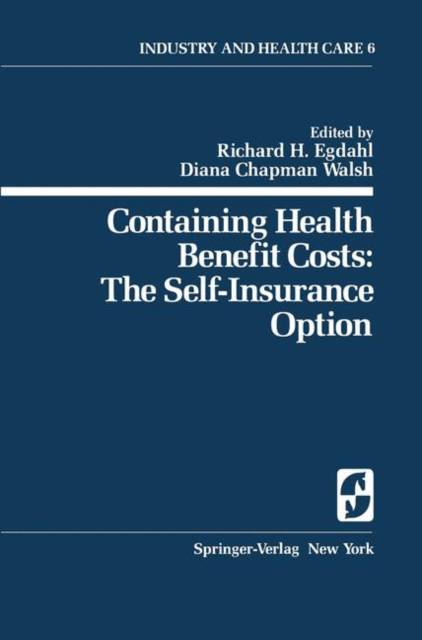
- Afhalen na 1 uur in een winkel met voorraad
- Gratis thuislevering in België vanaf € 30
- Ruim aanbod met 7 miljoen producten
- Afhalen na 1 uur in een winkel met voorraad
- Gratis thuislevering in België vanaf € 30
- Ruim aanbod met 7 miljoen producten
Zoeken
Containing Health Benefit Costs
The Self-Insurance Option
€ 106,95
+ 213 punten
Omschrijving
The springboard for this sixth volume in the Industry and Health Care series was a conference sponsored by the Center for Industry and Health Care of Boston University on June 9 and 10, 1978. That conference had a gradual genesis. Over a year ago we spent some time with Kevin Stokeld of Deere and Company and heard his views on self-insurance and self-administration as one device for a corporation to achieve better management control of its health benefit. More recent discussions with representatives of American Telephone and Telegraph Company and other corporations made it increasingly clear to us that management's need for data to monitor the use of employee health benefits was emerging as a critical policy issue. Subsequent meetings with executives at John Hancock Mutual Life Insurance Company in Boston and Mobil Oil Corporation in New York, among others, convinced us that simple answers would be elusive or inadequate and that there was a need for an objective and careful look at the evolving relationships between employee health benefits, claims administration, health services utilization, and corpo- rate health care cost containment programs. Since self-funding and particularly self-administration represent a fun- damental change in the traditional insurance relationship, the conference was convened to explore the advantages and disadvantages of self-insurance for employee health benefits, with some attention to claims production but with special emphasis on the originating question of data for effective management of an employee health benefit.
Specificaties
Betrokkenen
- Uitgeverij:
Inhoud
- Aantal bladzijden:
- 181
- Taal:
- Engels
- Reeks:
- Reeksnummer:
- nr. 6
Eigenschappen
- Productcode (EAN):
- 9780387903859
- Verschijningsdatum:
- 2/04/1979
- Uitvoering:
- Paperback
- Formaat:
- Trade paperback (VS)
- Afmetingen:
- 156 mm x 234 mm
- Gewicht:
- 276 g

Alleen bij Standaard Boekhandel
+ 213 punten op je klantenkaart van Standaard Boekhandel
Beoordelingen
We publiceren alleen reviews die voldoen aan de voorwaarden voor reviews. Bekijk onze voorwaarden voor reviews.










